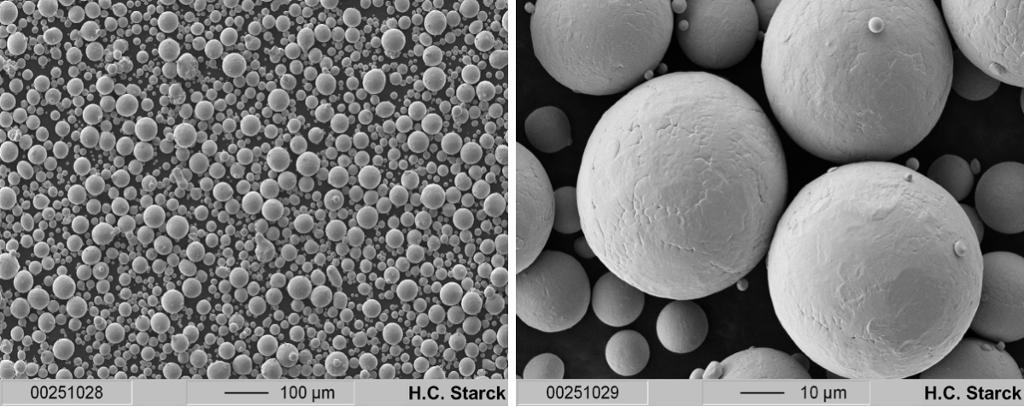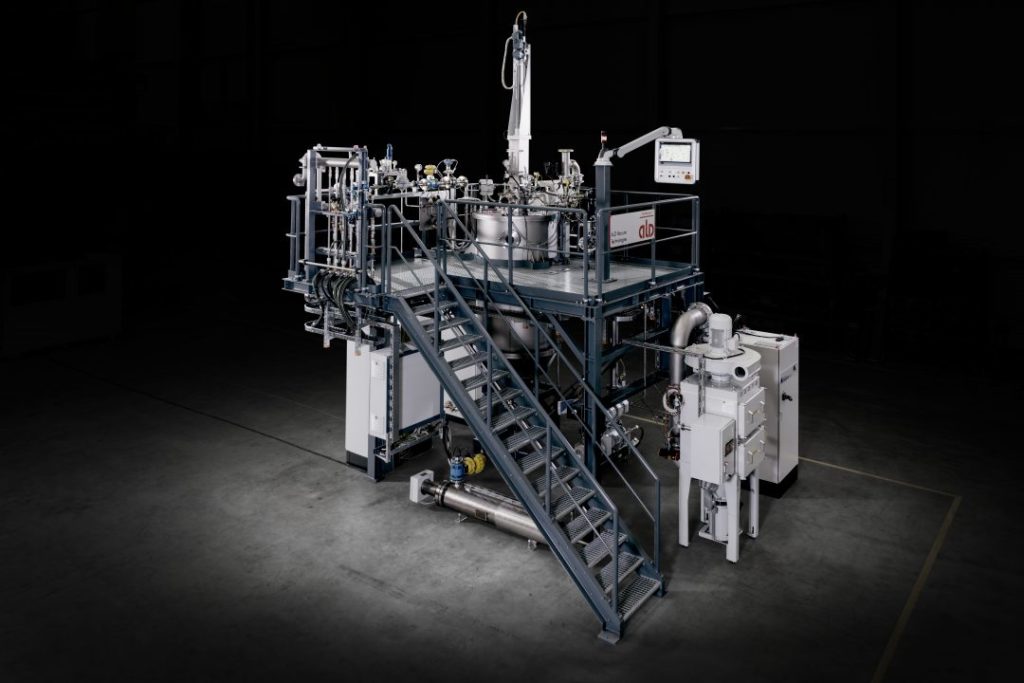Ti-42Nb is a new alloy on the 3D printing orthopedics block and it might yet shake things up. The material, which is being offered by Taniobis’ AMtrinsic brand (formerly H.C. Starck Tantalum and Niobium GmbH), has very interesting properties indeed and can be 3D printed at 99.95% density.
A 2018 paper already showed that Ti-42Nb may have better elasticity than the 3D print implant queen, Ti64, and may have good biocompatibility with osteoblasts and fibroblasts. That paper was the first to use laser powder bed fusion with this material. Others used Irepa Laser’s Clad or Optomec LENS, where super-elastic LENS parts were made with oxygen having an influence on superelasticity. In another paper, results were compared to MIM. Another paper from 2019 looked at remelting unused material and one more looked at using irregular powders. While these researchers essentially want to make the material on the fly. Interested in in-situ alloying? Learn more here.
Another paper concluded that the material was:
“…melted layer-by-layer into a microstructure with a very homogeneous distribution of Nb and Ti during the SLM process. Tensile tests display Young’s modulus of 60.51 ± 3.92 GPa and an ultimate tensile strength of 683.17 ± 16.67 MPa, whereas, under a compressive load, a compressive strength of 1330.74 ± 53.45 MPa is observed. The combination of high mechanical strength and low elastic modulus makes Ti-42Nb an interesting material for orthopedic and dental implants.”

This chapter also chimed in with positive results, confirming the lower stiffness of the material. So, why are elasticity and stiffness so important? Human bone has a Young’s modulus of between 10 and 40 GPa, with that of cortical bone being 30. Ti6Al4V has one of about 110 or 120, while Ti-42Nb has a Young’s modulus of 60, which is much closer. The closer that your implant mimics the modulus of bone, the better it will work for a long time. A bamboo rod tied to a steel rod will be wrecked if put under strain. A steel rod surrounded by Jello will wreck the Jello when put under strain.
A mismatch of the modulus may cause an implant to fail or osteoporosis to occur. Stress shielding is a potential problem where bone density decreases and the implant may loosen or fail. Our bone ‘remodels‘ itself, continually reusing old bone and building new. The strength of bone will be increased if mechanical loading is applied. Having foreign stiffer bits, inside a bone, that absorb the load means that the body will produce less strong bone. These parts are stiffer and, therefore, absorb the load which tricks the body into producing less bone mass and overall density will increase. Low-intensity loads and low-intensity exercises create more stress shielding. More intense exercise and loading will increase loads and better bone strength. But this mechanism is confused by the implant’s differing Young’s modulus and the body’s desire to be efficient and in balance, so its energies will be directed elsewhere. At the same time, in order to work as bone, strength must be super high, as must be its wear resistance. The resulting material must also be 3D printable and biocompatible.

An EIGA gas atomization facility by ALD.
Taniobis themselves say that their EIGA-made powder has high sphericality, “very smooth surfaces with few satellites”, and also “minimum number of fine particles that are attached to larger powder particles is an important prerequisite for optimal flowing behaviour in AM processes. Furthermore, a large number of satellites on the surface of larger particles formed by coalescence could negatively impact powder flowability, as they can result in friction and interlocking effects such as observed for irregularly shaped powders.” Their LPBF powders have an oxygen content of 247 ppm, with Taniobis saying that high cooling rates change a dendritic structure into a smooth glass one and that cooling rates have these effects on the powder microstructure. This creates a “fully homogenous elemental distribution in built parts” that also can have “high elasticity.”
This is a good time to look for new materials, too. There have been concerns with the Vanadium part of titanium alloys, as well as degradation of cobalt chrome implants and their toxicity. The jury is not out completely on what this means, but it could mean a titanic shift in material usage for implants and a dire need for new materials. Also, this could be scientific notation levels of liability for some materials and implant vendors. I really did think for a time that GE was waiting for the implant companies to all go bankrupt and then would enter the medical device market in a big way. All in all, it is a very opportune time for Ti-42Nb to come on the scene and be characterized, studied, and approved.
Subscribe to Our Email Newsletter
Stay up-to-date on all the latest news from the 3D printing industry and receive information and offers from third party vendors.
You May Also Like
Precision at the Microscale: UK Researchers Advance Medical Devices with BMF’s 3D Printing Tech
University of Nottingham researchers are using Boston Micro Fabrication‘s (BMF) 3D printing technology to develop medical devices that improve compatibility with human tissue. Funded by a UK grant, this project...
3D Printing Webinar and Event Roundup: April 21, 2024
It’s another busy week of webinars and events, starting with Hannover Messe in Germany and continuing with Metalcasting Congress, Chinaplas, TechBlick’s Innovation Festival, and more. Stratasys continues its advanced training...
3D Printing Webinar and Event Roundup: March 17, 2024
It’s another busy week of webinars and events, including SALMED 2024 and AM Forum in Berlin. Stratasys continues its in-person training and is offering two webinars, ASTM is holding a...
3D Printed Micro Antenna is 15% Smaller and 6X Lighter
Horizon Microtechnologies has achieved success in creating a high-frequency D-Band horn antenna through micro 3D printing. However, this achievement did not rely solely on 3D printing; it involved a combination...





























